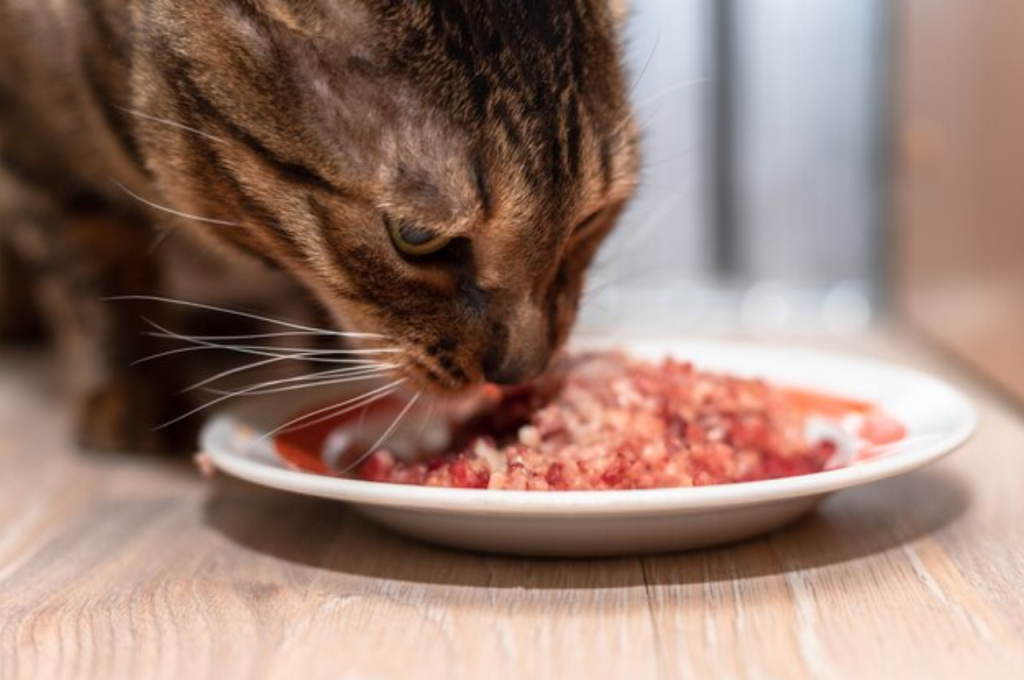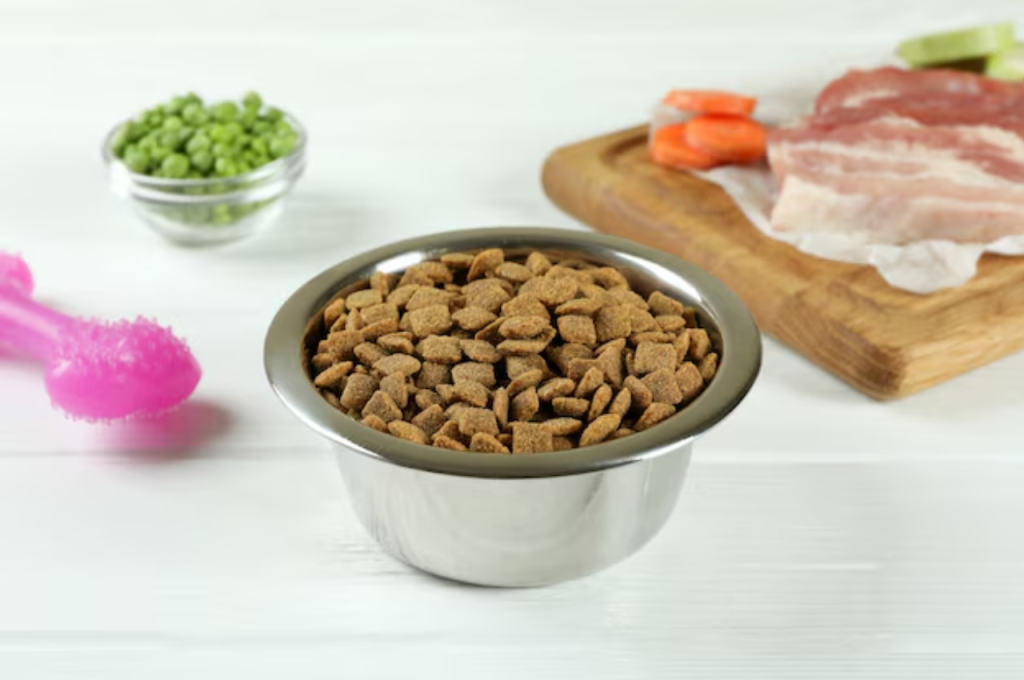When choosing between cat food, tuna, and salmon, consider your cat’s dietary needs and preferences. Cat food is formulated specifically for feline nutrition, while tuna and salmon can be given as occasional treats for added variety in their diet.
Cat food provides essential nutrients tailored for cats, while tuna and salmon offer quality protein and omega-3 fatty acids. It’s important to balance your cat’s diet with a combination of these options to ensure they receives all necessary nutrients for optimal health.
Keep in mind that tuna should be given in moderation due to its high mercury content, and always consult with your veterinarian before making significant changes to your cat’s diet.
Cat Food
When choosing the right cat food, it’s important to consider the nutritional benefits of tuna and salmon as options. Both tuna and salmon offer high protein content for your feline friend, but it’s essential to ensure they are appropriately balanced for vitamins and minerals to support your cat’s overall health.

Types of Cat Food
Cat food comes in various types such as dry, wet, semi-moist, and raw. Each type offers different benefits for your feline companion. Understanding the characteristics of each type can help you choose the best option to meet your cat’s nutritional needs and preferences.
Ingredients to Look for in Cat Food
Ideal cat food should contain high-quality protein sources like chicken, fish, or turkey, and limited fillers or by-products.
How Cat Food is Made
Cat food is made through processes like extrusion or canning to ensure it is nutritionally balanced for your cat’s needs.
Tuna
In the realm of cat food, tuna holds a special place as a popular choice among feline friends. Tuna is often praised for its distinctive taste and strong appeal to cats.
Nutritional Value of Tuna
Tuna contains high levels of protein, which is essential for cat health. It also provides omega-3 fatty acids that support your cat’s overall well-being.
Health Benefits for Cats
- Tuna is beneficial for maintaining a healthy coat and skin.
- It helps in promoting good heart health due to its omega-3 content.
Concerns About Tuna in Cat Diet
- Tuna should be fed in moderation as it can lead to mercury poisoning.
- Excessive consumption of tuna may cause nutrient imbalances in your cat’s diet.
Salmon
Salmon is a popular fish known for being a rich source of nutrients, and it can be a valuable addition to a cat’s diet. When considering the nutritional value, health benefits, and potential risks of feeding salmon to cats, it’s essential to understand the implications of including this fish in their diet.
Nutritional Value of Salmon
Salmon is packed with essential nutrients that can contribute to a cat’s overall well-being. The fish is a good source of high-quality protein, which is crucial for muscle growth and maintenance. In addition, salmon contains omega-3 fatty acids, such as EPA and DHA, that support a cat’s cardiovascular health and promote a shiny coat and healthy skin.
Health Benefits for Cats
- High-quality protein supports muscle growth and maintenance.
- Omega-3 fatty acids promote cardiovascular health and healthy skin.
- Beneficial for overall well-being.
Potential Risks of Feeding Salmon to Cats
- Excessive consumption of salmon can lead to vitamin B12 deficiency.
- Presence of parasites such as flukes or tapeworms.
- High levels of mercury in certain types of salmon.
Comparison
When it comes to choosing the best cat food, tuna and salmon are two popular options. In this comparison, we’ll take a closer look at the protein content, cost, taste, and preference of these fish-based cat foods.

Protein Content Comparison
Protein is a crucial nutrient for cats as it supports their overall health, muscle development, and energy levels. Let’s compare the protein content of cat food, tuna, and salmon:
| Cat Food | Tuna | Salmon | |
| Protein Content (per 100g) | 15g | 22g | 26g |
As seen in the table above, both tuna and salmon contain higher protein content compared to regular cat food. Tuna offers approximately 22g of protein per 100g, while salmon provides an even higher protein content of 26g per 100g. If you’re looking to give your cat a protein-rich diet, either tuna or salmon could be a great choice.
Cost Comparison
Cost is an essential factor to consider when selecting cat food. Let’s compare the cost of cat food, tuna, and salmon:
- Cat Food: $0.50 per can
- Tuna: $0.80 per can
- Salmon: $1.20 per can
As indicated above, cat food is the most affordable option, with an average cost of $0.50 per can. Tuna costs slightly more at $0.80 per can, while salmon is the priciest option at $1.20 per can. It’s important to take into account your budget when deciding which fish-based cat food to choose.
Taste and Preference
When it comes to taste and preference, cats can be quite particular. Some cats may have a strong liking for one type of fish over the other. However, it’s essential to note that both tuna and salmon offer a rich and distinctive flavor that cats often find enticing.
If your cat has previously shown a preference for tuna, it may be worth giving tuna-based cat food a try. On the other hand, if your cat enjoys the taste of salmon, opting for salmon-based cat food can be a delightful choice. Ultimately, your cat’s preference should guide your decision, ensuring they enjoy their meals to the fullest.
Choosing The Right Option
When it comes to feeding our feline friends, it’s important to choose the right option that not only satisfies their taste buds but also meets their nutritional needs. Cat food, tuna, and salmon are all popular choices, each with their advantages and considerations. In this article, we will explore various factors to consider when choosing between cat food, tuna, and salmon for your feline companion.
Considerations for Cat’s Health
The health of our cats should always be the top priority when selecting their diet. While tuna and salmon are both rich in omega-3 fatty acids, essential for a healthy coat and skin, it’s important to remember that they should be given in moderation. Tuna, especially if not specifically formulated for cats, can be high in mercury content, which can be harmful to our feline friends when consumed in large quantities.
On the other hand, cat food is specially designed to provide a balanced and complete diet for cats, meeting all their nutritional requirements. It contains essential nutrients such as taurine, which is crucial for a cat’s heart health. Therefore, cat food is often the safest option when it comes to considering the overall health of our cats.
Preferences and Allergies
Just like humans, cats have their preferences when it comes to food. Some cats may have a strong preference for the taste and smell of fish, making tuna and salmon a desirable option for them. However, it’s essential to monitor any signs of allergies or sensitivities that your cat may have to fish. Some cats may be allergic to fish proteins, which can cause skin irritations, digestive issues, or even more severe reactions.
In such cases, it might be best to opt for a cat food brand that does not contain fish as the primary ingredient. Additionally, it’s important to introduce any new food gradually and observe your cat’s response to ensure their comfort and well-being.
Consulting A Veterinarian
When it comes to making important decisions concerning our cat’s diet, it’s always a good idea to consult a veterinarian. A professional veterinarian is well-equipped to provide personalized advice and guidance based on your cat’s specific needs, preferences, and health conditions. They can recommend suitable cat food brands or even suggest alternative sources of omega-3 fatty acids that are safer and more beneficial for your cat’s health.

Remember, the expertise of a veterinarian is invaluable and can help you make an informed decision that ensures the well-being and happiness of your beloved feline companion.
Frequently Asked Questions for Cat Food vs Tuna vs Salmon
Certainly! Here are some frequently asked questions (FAQs) regarding the comparison between cat food, tuna, and salmon as protein sources:
Q. Can I feed my cat regular food instead of cat food?
A. No, it is not recommended to feed your cat regular food instead of cat food. Cats have specific dietary needs that regular food may not meet. Cat food is formulated to provide the necessary nutrients for a cat’s health and should be the primary source of food for your feline companion.
Q. Is tuna safe for cats to eat?
A. While tuna can be a tasty treat for cats, it should only be given in moderation. Consuming too much tuna can lead to mercury poisoning and other health issues. It’s best to offer your cat cat-specific tuna products, which are formulated to meet the nutritional needs of felines.
Q. What are the benefits of feeding my cat salmon?
A. Feeding your cat salmon can have numerous benefits. Salmon is a rich source of omega-3 fatty acids, which can help promote a healthy coat, reduce inflammation, and support brain health in cats. However, it’s important to serve salmon as a treat or supplement to a balanced cat food diet.
Q. How much cat food should I feed my cat?
A. The amount of cat food to feed your cat depends on various factors, such as their age, weight, and activity level. It’s best to follow the feeding guidelines provided by the cat food manufacturer. As a general rule, adult cats usually require about 1/4 to 1/3 cups of dry cat food per day, divided into multiple meals.
Conclusion
The best choice for your cat’s health and happiness depends on their preferences and nutritional needs. While cat food offers a balanced diet, tuna, and salmon can be occasional treats. Variety is key to providing a well-rounded diet for your feline friend, so mixing it up can provide the best of both worlds.
